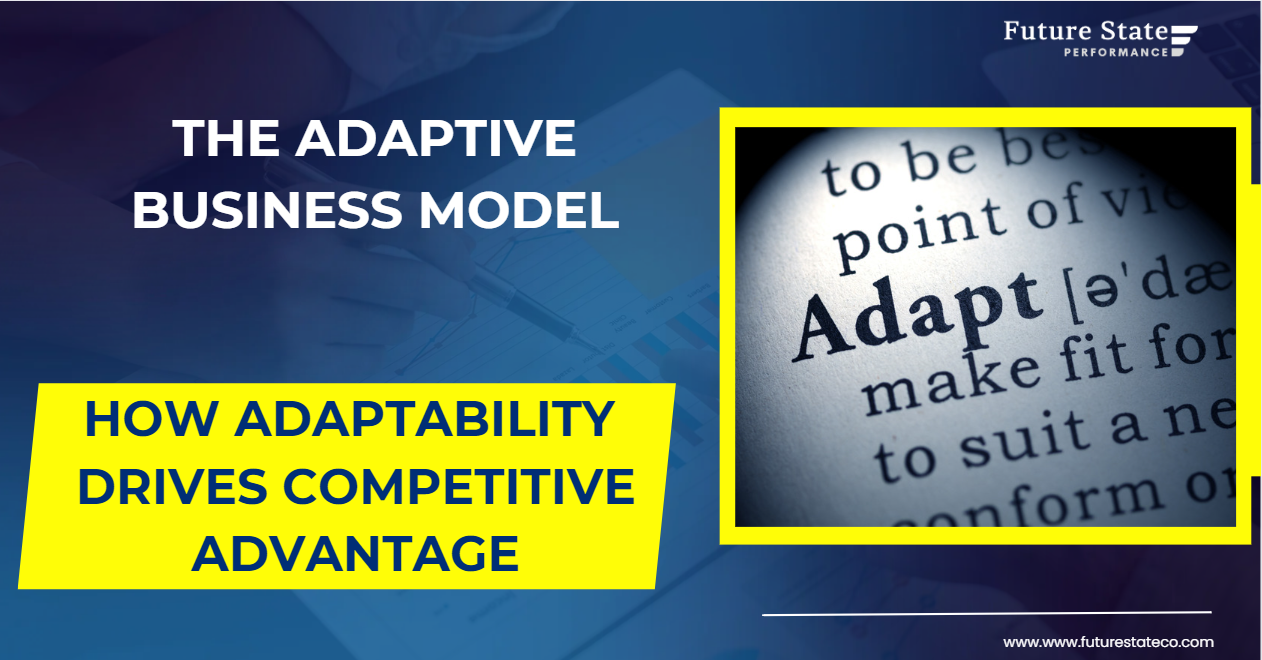Summary
In today’s dynamic business environment, an inflexible model spells trouble. Companies face a constantly evolving battlefield with economic fluctuations, ever-changing customer needs, and rapid technological advancements. To thrive, businesses need to embrace adaptability. This article explored the key factors that necessitate an adaptive business model:
Market Dynamics & Uncertainty: Economic downturns, shifting consumer trends, and unforeseen events demand real-time adjustments in pricing, marketing, and resource allocation.
Evolving Customer Needs: Continuous innovation is crucial to meet ever-changing customer expectations and stay ahead of the curve.
Technological Disruption: Emerging technologies can revolutionize entire industries. Adaptability allows companies to leverage these advancements for efficiency, automation, and new revenue streams.
Shifting Regulatory Landscape: Staying compliant requires keeping pace with changing regulations and adapting operations accordingly.
Competitive Advantage: Responding quickly and effectively to competitor moves is vital in a crowded marketplace.
Beyond these core factors, adaptability extends to areas like supply chain fluctuations, financial performance, talent acquisition, and social responsibility.
The takeaway? An adaptive business model isn’t a fad, it’s a strategic imperative for building resilience and achieving long-term success. By embracing adaptability and continuously refining your model, you can navigate the complexities of the modern business world and emerge victorious.
Introduction
The business landscape is no longer a predictable playing field, it’s a dynamic and sometimes volatile environment. Businesses that cling to rigid models are at a significant disadvantage.. I’ve witnessed firsthand the challenges and opportunities that arise from economic fluctuations, market trends, technological advancements, regulatory shifts, and evolving customer expectations
Survival, let alone thriving, demands a new approach: adaptability
The ability to react swiftly, innovate continuously, and adjust strategies in real-time is no longer a luxury, it’s a necessity. This article will explore why an adaptive business model is the key to navigating this complex landscape and achieving long-term success.
So why do businesses require an adaptive approach?
Economic Fluctuations & Market Dynamics:
From geopolitical tensions to global pandemics, businesses must anticipate and adapt to changing economic conditions & market trends and unforeseen events can cripple a static model. An adaptive business model enables organisations to pivot quickly, seize emerging opportunities, and mitigate risks in volatile environments.
Innovation for Evolving Customer Needs:
Customer expectations are constantly changing. An adaptive approach nurtures a culture of innovation, encouraging experimentation, iteration, and customer-centricity to deliver products and services that resonate with evolving preferences. Think about how e-commerce transformed retail or the way cloud computing changed storage needs.
Technological Advancements:
The pace of technological advancements is accelerating and have the capability to disrupt entire industries. An adaptable business model allows you to leverage emerging technologies to improve efficiency, automate tasks, and create entirely new revenue streams. Consider how e-commerce transformed retail or the way cloud computing changed storage needs.
A Continuously Shifting Regulatory Landscape:
Compliance with regulations can be a moving target. From data privacy regulations to environmental standards, staying abreast of regulatory changes is essential for mitigating compliance risks and maintaining trust with stakeholders. An adaptive model ensures you remain compliant by staying up-to-date on new regulations and adapting your operations accordingly.
Competitive Advantage in a Crowded Market:
In today’s hyper-competitive landscape, maintaining a competitive advantage is paramount. An adaptive model allows you to react quickly and effectively to competitor moves. By analysing competitor strategies and adapting your own approach, you can gain a significant edge in the marketplace.
Building Resilience Beyond the Obvious
Adaptability goes beyond these core factors. Here are some additional areas where flexibility is crucial:
Supply Chain Fluctuations:
Global supply chains are vulnerable to disruptions. They can have far-reaching implications for businesses, impacting everything from production schedules to customer satisfaction. An adaptive model allows you to diversify your supplier base, explore alternative sourcing options, and develop contingency plans to mitigate disruptions.
Financial Performance:
Economic downturns can impact your bottom line. An adaptive approach allows you to adjust spending, explore new revenue streams, and adapt your financial strategies to maintain financial stability.
Talent Acquisition & Retention:
Today’s workforce seeks meaningful work in a dynamic environment and engaged & skilled employees are invaluable assets to any organisation. An adaptive model nurtures employee engagement by allowing them to contribute to shaping the future of the company. This can lead to higher talent retention and a more engaged workforce.
Social & Environmental Responsibility:
Consumer and investor expectations around sustainability are rising. An adaptive model allows you to develop environmentally friendly practices and socially responsible initiatives, which can not only enhance your brand image but also attract new customers and talent.
Business Resilience
Resilience is the cornerstone of business survival and success. An adaptive business model builds resilience through proactive risk management, scenario planning, and contingency strategies to withstand unforeseen disruptions and emerge stronger from adversity.
In fact, adaptability is the Key to Business Resilience
In conclusion,
An adaptive business model isn’t just a strategic choice, it’s a strategic imperative for ensuring your business thrives in the face of uncertainty. By embracing an adaptable mindset and continuously refining your model to address these key factors, you can build a resilient business that can not only survive but also thrive in a dynamic and ever-changing world.
#AdaptiveBusinessModel #BusinessStrategy #Innovation #Agility #Resilience #NavigatingChange
______________________________
⏩What are your thoughts? 💬 – What are your thoughts on the level of uncertainty in the marketplace? 🌟💼
🔔 Hit the notification icon to get notified on new content
🔁 If this resonates, feel free to repost
______________________________
#futurestateacademy #InterconnectedFrameworks #BusinessStrategy #SystemsThinking #AdaptiveBusinessModel #BusinessStrategy #Innovation #Agility #Resilience #NavigatingChange #BusinessSuccess


